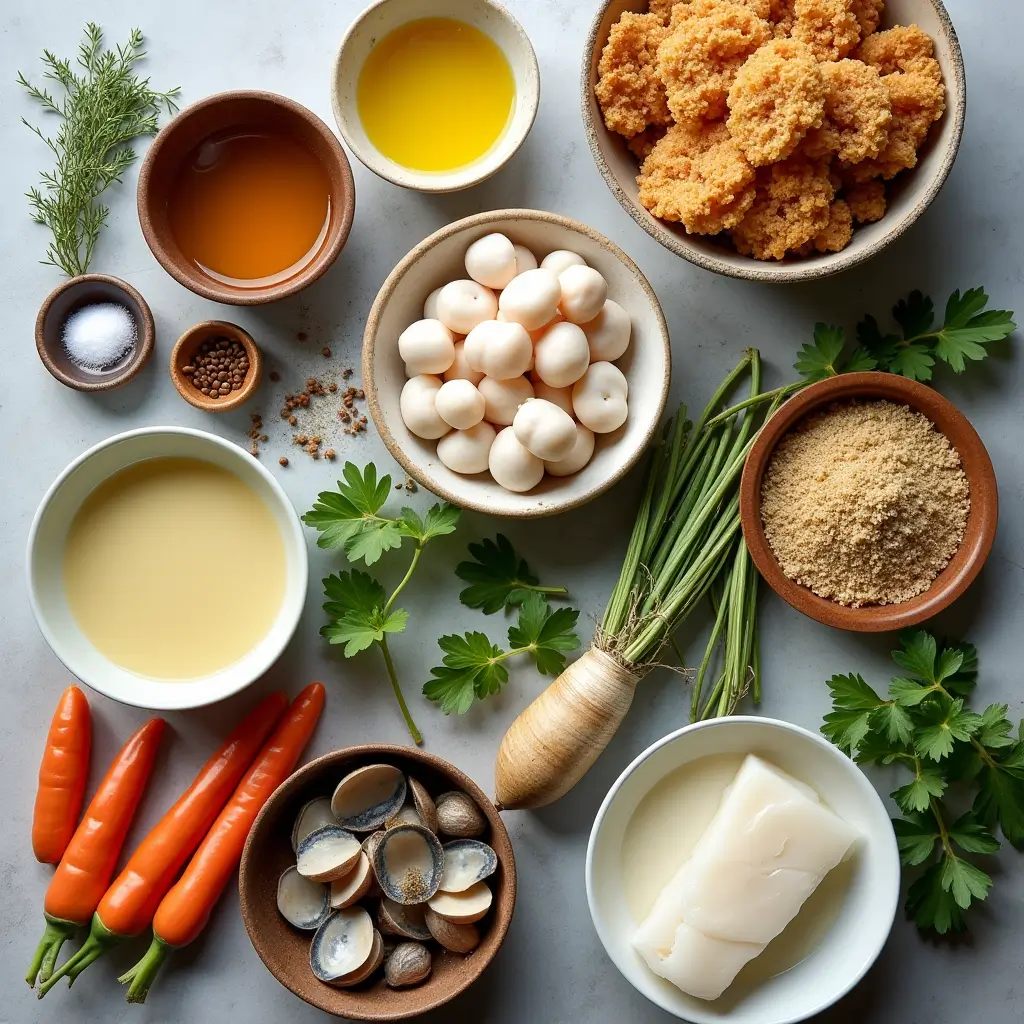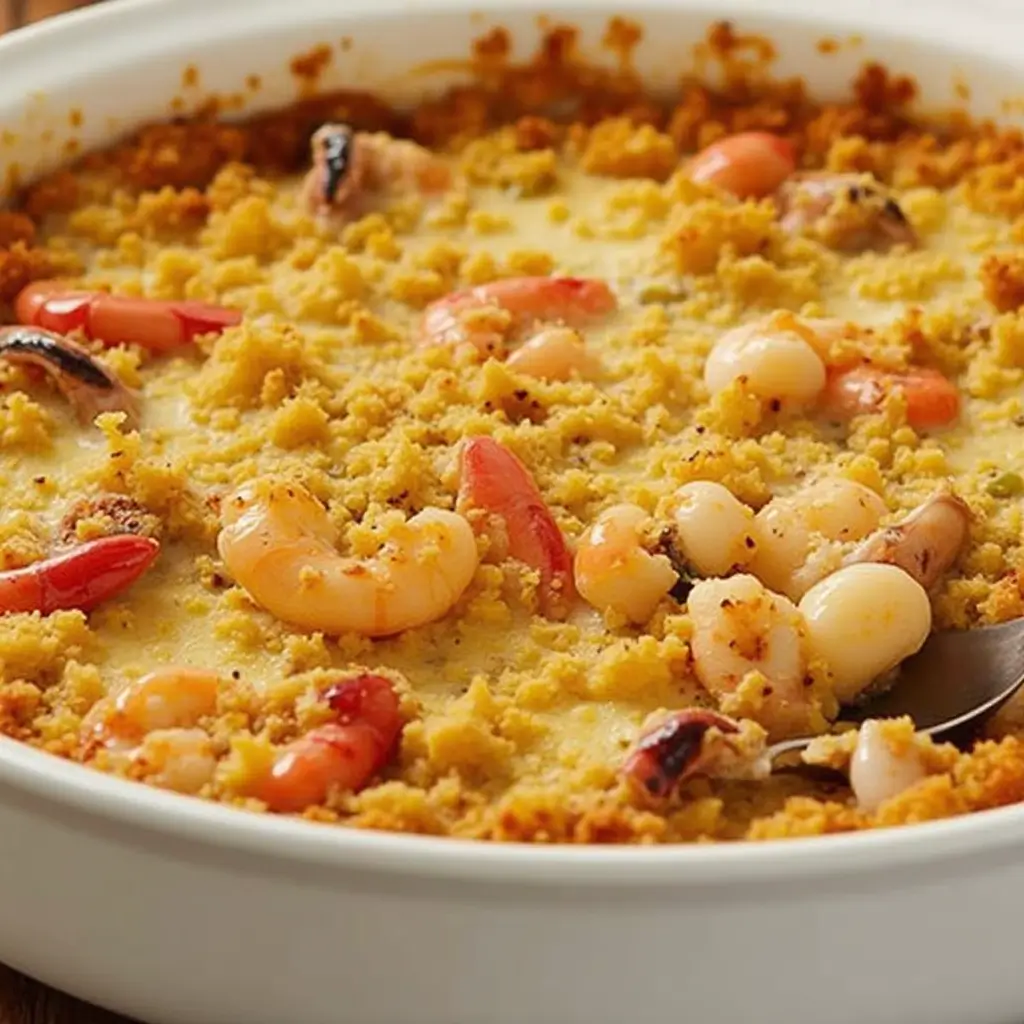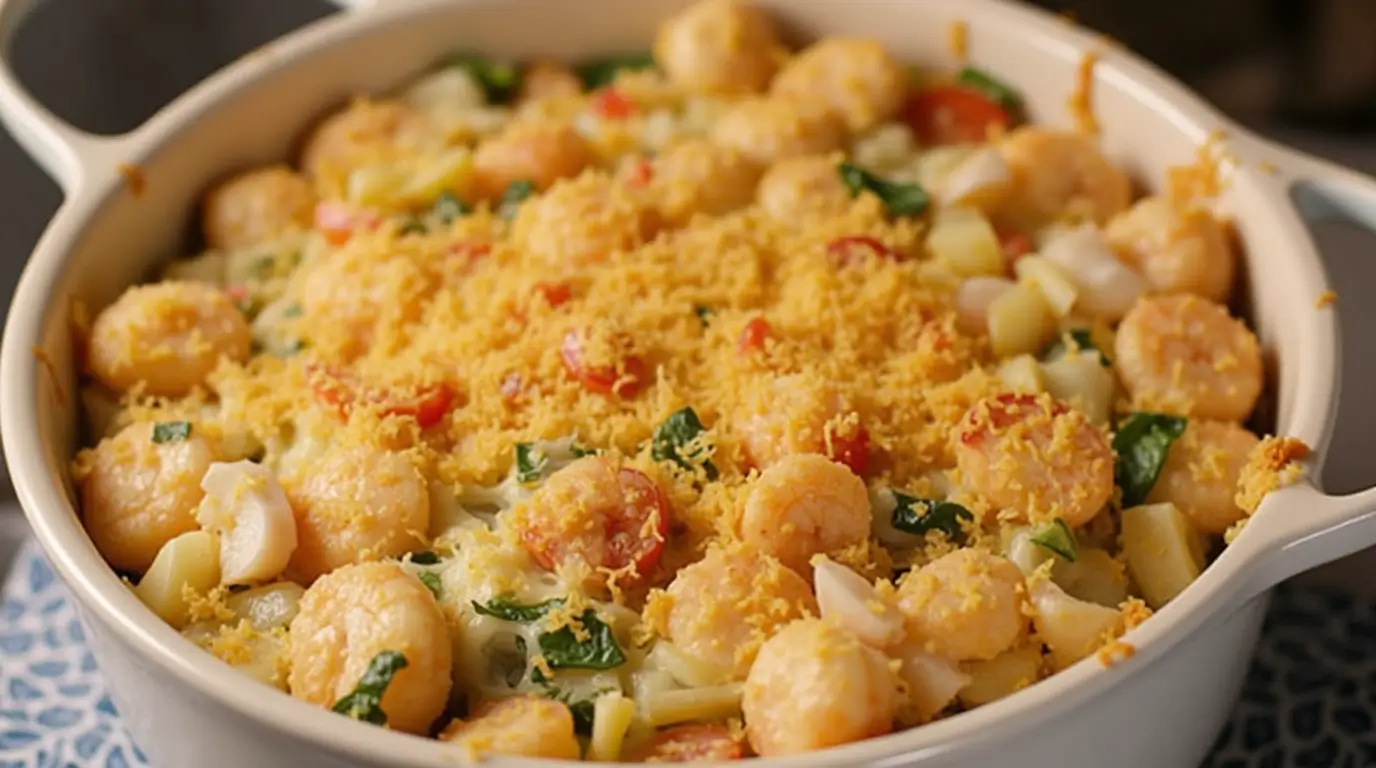Table of Contents
Struggling to find a dinner option that’s both impressive and easy to prepare? After a long day, the last thing you want is a complicated recipe with endless steps. That’s where this simple yet delicious seafood casserole comes to the rescue! This creamy, flavor-packed dish combines tender seafood with a rich sauce and crispy topping that’s guaranteed to please even picky eaters.
As a culinary instructor specializing in quick gourmet meals for over 8 years, I’ve refined this seafood casserole recipe to perfection. It strikes that ideal balance between convenience and sophistication that home cooks crave.
In this guide, you’ll discover everything from selecting the freshest seafood to mastering the perfect sauce consistency. Plus, I’ll share my professional tips for make-ahead options and flavor variations that will transform this dish into a regular feature in your dinner rotation.
Why This Seafood Casserole Recipe Works
- Uses affordable frozen seafood mix for convenience and value
- Prep and assembly takes just 20 minutes before baking
- One-dish meal means minimal cleanup
- Versatile recipe works with whatever seafood you have on hand
- Make-ahead friendly for busy weeknights
- Reheats beautifully for delicious leftovers
Choosing the Right Seafood
Best Seafood Options for Casserole
The beauty of a seafood casserole lies in its flexibility. You can use nearly any combination of seafood, but certain options work particularly well:
- Shrimp: Medium-sized shrimp (41-50 count) provide the perfect bite and cook quickly
- Scallops: Bay scallops (the smaller variety) distribute beautifully throughout the casserole
- White Fish: Cod, haddock, or tilapia add substance without overpowering other flavors
- Crab: Either lump crabmeat or imitation crab adds sweetness and texture
Buying Tips
- Frozen seafood is perfectly acceptable and often fresher than “fresh” seafood at the counter
- Look for packages labeled “individually quick frozen” for best quality
- Avoid seafood with freezer burn or excessive ice crystals
- Pre-cooked seafood works well but should be added later in the cooking process
- Sustainable seafood options like MSC-certified frozen fish are excellent choices
Ingredients & Prep
Seafood Prep Essentials
- Thaw frozen seafood in refrigerator overnight for best results
- Pat seafood dry with paper towels to prevent a watery casserole
- Cut larger pieces (like fish fillets) into 1-inch chunks for even cooking
- Remove any shells, tails, or cartilage before incorporating into the casserole
Sauce Base
- Butter and flour roux creates the perfect creamy base
- Heavy cream or half-and-half provides richness
- Seafood stock amplifies flavor (store-bought works fine)
- Lemon zest brightens the dish without making it watery
Pantry Staples
- Old Bay seasoning is the secret weapon for authentic seafood flavor
- Garlic and onions provide aromatic foundation
- Parsley adds fresh color and flavor
- Panko breadcrumbs create the perfect crispy topping

Step-by-Step Cooking Instructions
1. Pre-Cooking Prep
Start with your seafood fully thawed and patted dry. Preheat your oven to 375°F and lightly grease a 9×13 baking dish. Chop your aromatics and measure out all ingredients before starting the sauce.
2. Creating the Perfect Sauce
In a large saucepan, melt 4 tablespoons butter over medium heat. Add diced onion and cook until translucent, about 3-4 minutes. Add minced garlic and cook for 30 seconds until fragrant.
Sprinkle 3 tablespoons flour over the mixture and stir constantly for 1-2 minutes to cook out the raw flour taste. Slowly whisk in 1 cup seafood stock, stirring constantly to prevent lumps.
Reduce heat to medium-low and add 1 cup half-and-half or heavy cream. Simmer gently until thickened, about 5 minutes. Season with 1½ teaspoons Old Bay seasoning, ½ teaspoon salt, and ¼ teaspoon pepper.
3. Assembling the Casserole
Gently fold your prepared seafood into the sauce, being careful not to break up delicate pieces. If using pre-cooked seafood, simply fold it in last.
Transfer the mixture to your prepared baking dish, spreading it evenly.
4. Creating the Topping
In a small bowl, combine 1 cup panko breadcrumbs with 2 tablespoons melted butter, 2 tablespoons grated Parmesan cheese, and 1 tablespoon chopped fresh parsley. Sprinkle this mixture evenly over the casserole.
5. Baking to Perfection
Bake uncovered in the preheated oven for 25-30 minutes, until the topping is golden brown and the casserole is bubbling around the edges. The internal temperature should reach 145°F.
6. Resting the Casserole
Allow the seafood casserole to rest for 5-10 minutes before serving. This helps the sauce set slightly and allows the flavors to meld together.
7. Garnishing and Serving
Sprinkle with additional fresh parsley and lemon wedges just before serving for a bright finish.

Pro Tips for Perfect Seafood Casserole
Avoiding Common Mistakes
- Don’t overcook! Seafood continues cooking as the casserole rests
- Ensure your sauce is properly thickened before adding seafood to prevent a runny casserole
- For mixed seafood, add items with different cooking times in stages
- Always taste and adjust seasoning before baking – seafood needs proper seasoning
Tool Recommendations
- Instant-read thermometer ensures perfectly cooked seafood
- Heavy-bottom saucepan prevents sauce from scorching
- Ceramic baking dish conducts heat evenly and looks beautiful for serving
- Silicone-coated whisk won’t scratch your cookware when making the sauce
Storage & Reheating
- Refrigerate leftovers within 2 hours in an airtight container
- Consume within 2-3 days for best quality
- Reheat gently in a 300°F oven covered with foil until just heated through
- Freeze unbaked casserole for up to 1 month; thaw completely before baking
Flavor Variations
Creamy Cajun Seafood Casserole
Replace Old Bay with Cajun seasoning, add diced bell peppers to the sauce base, and incorporate andouille sausage for a New Orleans-inspired twist.
Mediterranean Seafood Casserole
Add chopped artichoke hearts, sun-dried tomatoes, and kalamata olives. Replace parsley with fresh dill and add crumbled feta to the topping.
Asian-Inspired Seafood Casserole
Incorporate ginger, lemongrass, and a splash of coconut milk into the sauce. Top with panko mixed with sesame seeds and serve with lime wedges.
Serving Suggestions
This seafood casserole pairs beautifully with simple sides that complement without overwhelming:
- Lemon-butter rice pilaf
- Roasted asparagus or green beans
- Crusty French bread for soaking up the sauce
- Simple green salad with vinaigrette
FAQs
Can I use frozen seafood without thawing?
While it’s best to thaw seafood first, you can use frozen seafood in a pinch. Extend the cooking time by about 10 minutes and check that the internal temperature reaches 145°F.
How do I know when my seafood casserole is done?
The casserole should be bubbling around the edges with a golden-brown top. The internal temperature should reach 145°F, and fish should flake easily.
Can I make this seafood casserole ahead of time?
Yes! Prepare the casserole up to the point of baking, cover, and refrigerate for up to 24 hours. Allow it to sit at room temperature for 30 minutes before baking, and you may need to add 5-10 minutes to the baking time.
Is this recipe safe for pregnant women?
Yes, as long as the seafood is cooked to an internal temperature of 145°F. Pregnant women should ensure all seafood is fully cooked and consider using only fresh or properly handled frozen seafood.
Conclusion
This seafood casserole recipe transforms simple ingredients into a restaurant-worthy dinner with minimal effort. The combination of tender seafood, creamy sauce, and crunchy topping creates a satisfying meal that’s perfect for both weeknight dinners and special occasions.
Thousands of home cooks have made this their go-to seafood recipe, praising its foolproof approach and delicious results. Why not join them and make this seafood casserole part of your regular dinner rotation?

